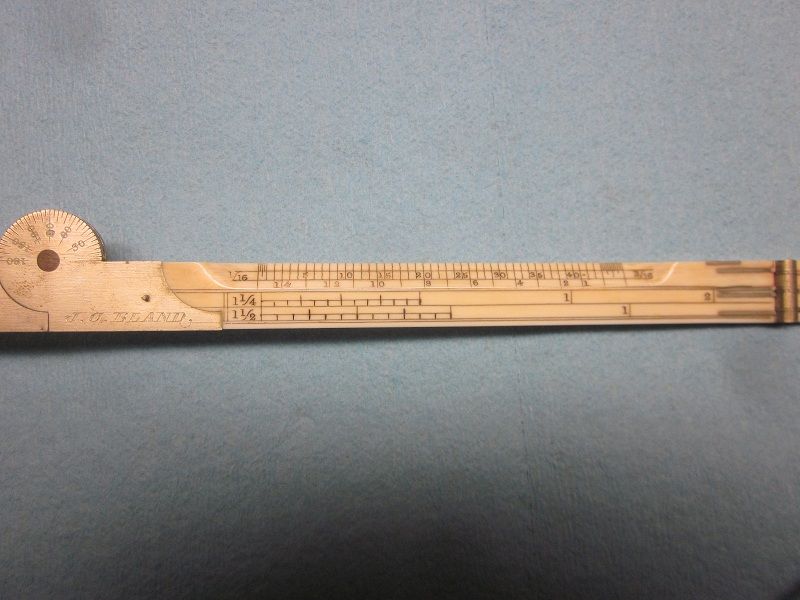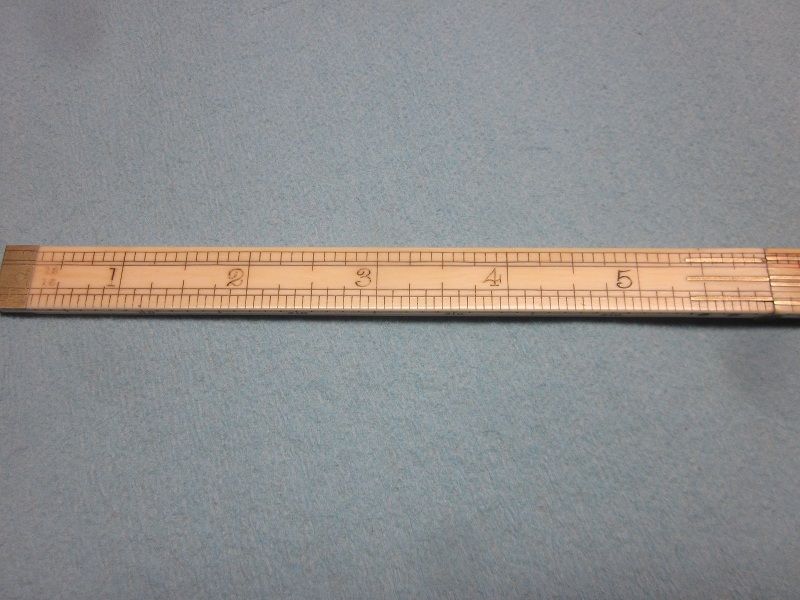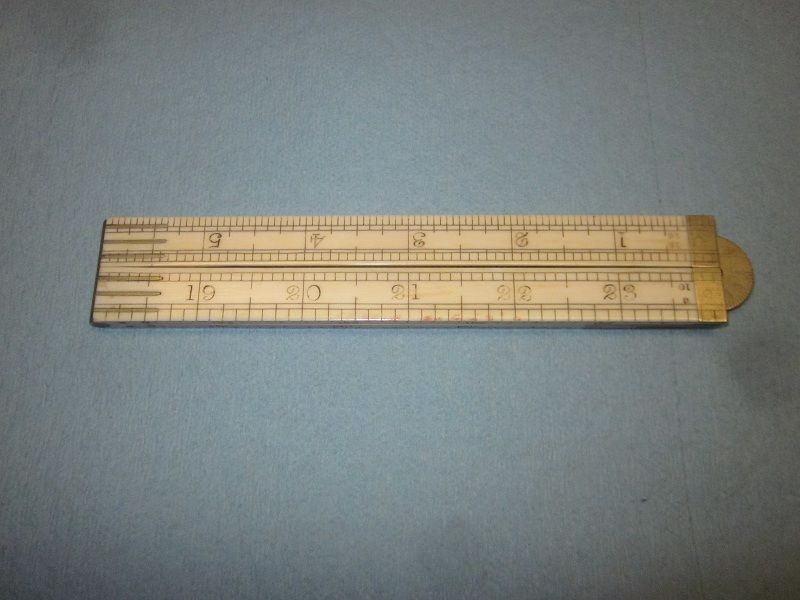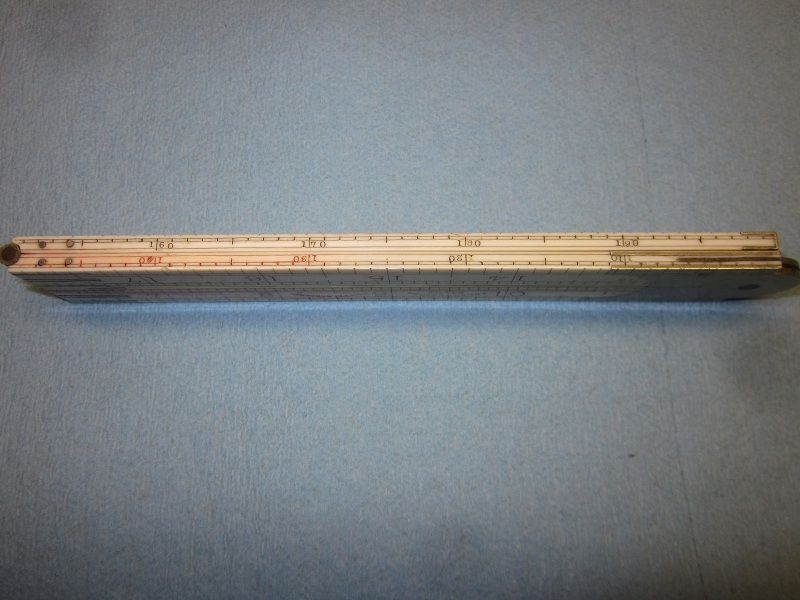It is a 24 inch rule with a lot of different scales on it, plus a partial protractor .
I'm not sure why it came out so dark, it is actually nice and white in reality. Probably the light, no flash used.
There are a large number of different scales, including twelfths of an inch, and a atandard inch scale. The edge has another scale on it, which appears to be a 1 3/16" per division scale. It seems to have been made by a British firm for K&E, as the engraved marks appear to show.
Found it at a tag sale today, for nearly nothing, and decided I liked it and had to have it.
Looking up K&E folding rules on google, I saw nothing just like it, and only one similar, which is a 1 foot rule. I did not see what scales it has on it, since the pictures were not good enough to show detail on the outside surfaces. Maybe there was nothing. The hinges on this one are different from the others, as well. Same idea, but many more "fingers" into the segments of the scale. I don;t know the material of the body segments, if old enough could be ivory, I suppose, otherwise some form of celluloid, perhaps.
Anyone know more about it?
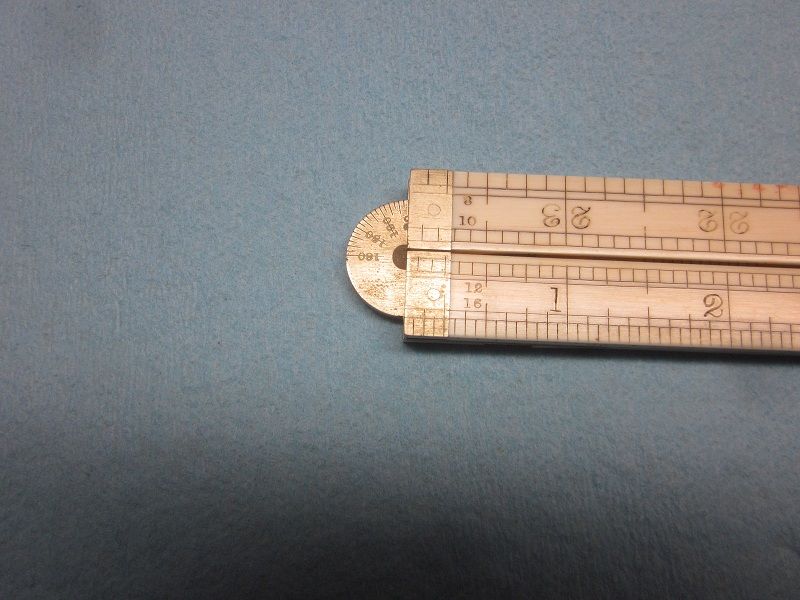
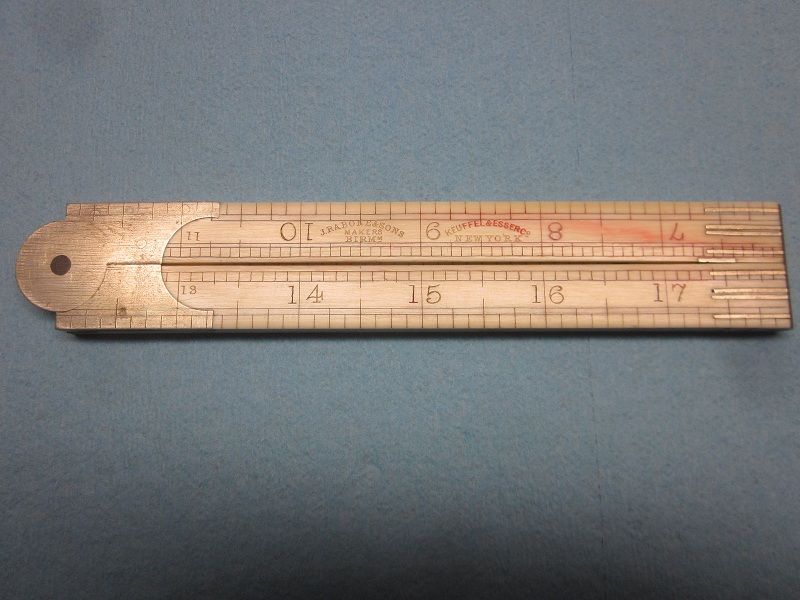
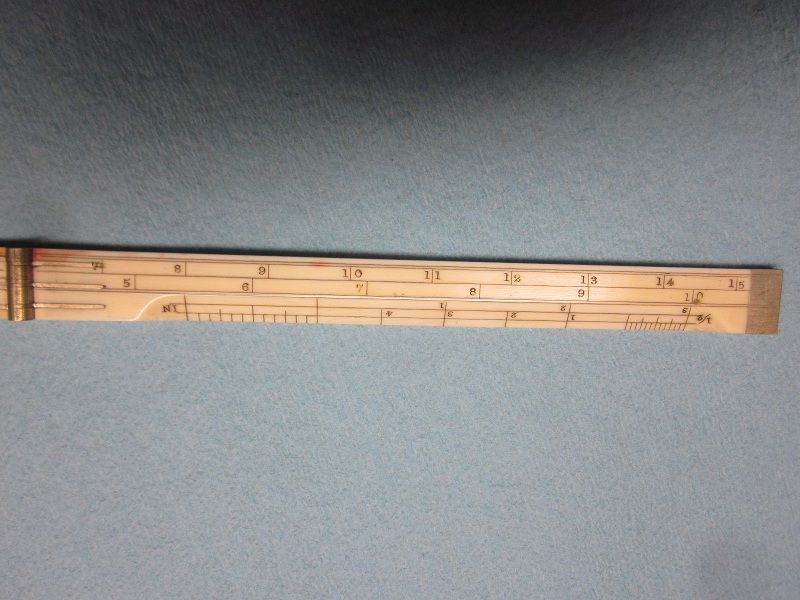

I'm not sure why it came out so dark, it is actually nice and white in reality. Probably the light, no flash used.
There are a large number of different scales, including twelfths of an inch, and a atandard inch scale. The edge has another scale on it, which appears to be a 1 3/16" per division scale. It seems to have been made by a British firm for K&E, as the engraved marks appear to show.
Found it at a tag sale today, for nearly nothing, and decided I liked it and had to have it.
Looking up K&E folding rules on google, I saw nothing just like it, and only one similar, which is a 1 foot rule. I did not see what scales it has on it, since the pictures were not good enough to show detail on the outside surfaces. Maybe there was nothing. The hinges on this one are different from the others, as well. Same idea, but many more "fingers" into the segments of the scale. I don;t know the material of the body segments, if old enough could be ivory, I suppose, otherwise some form of celluloid, perhaps.
Anyone know more about it?






